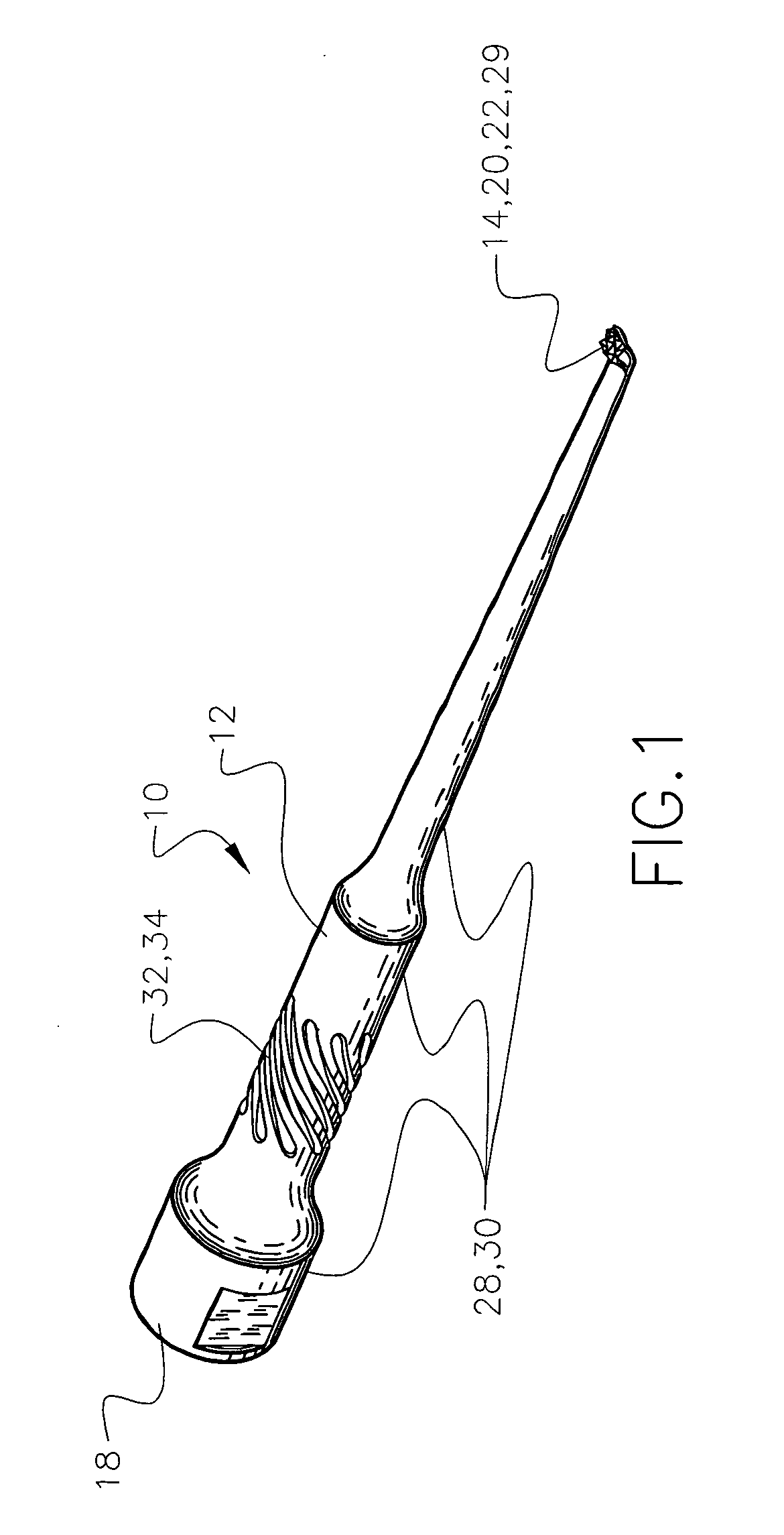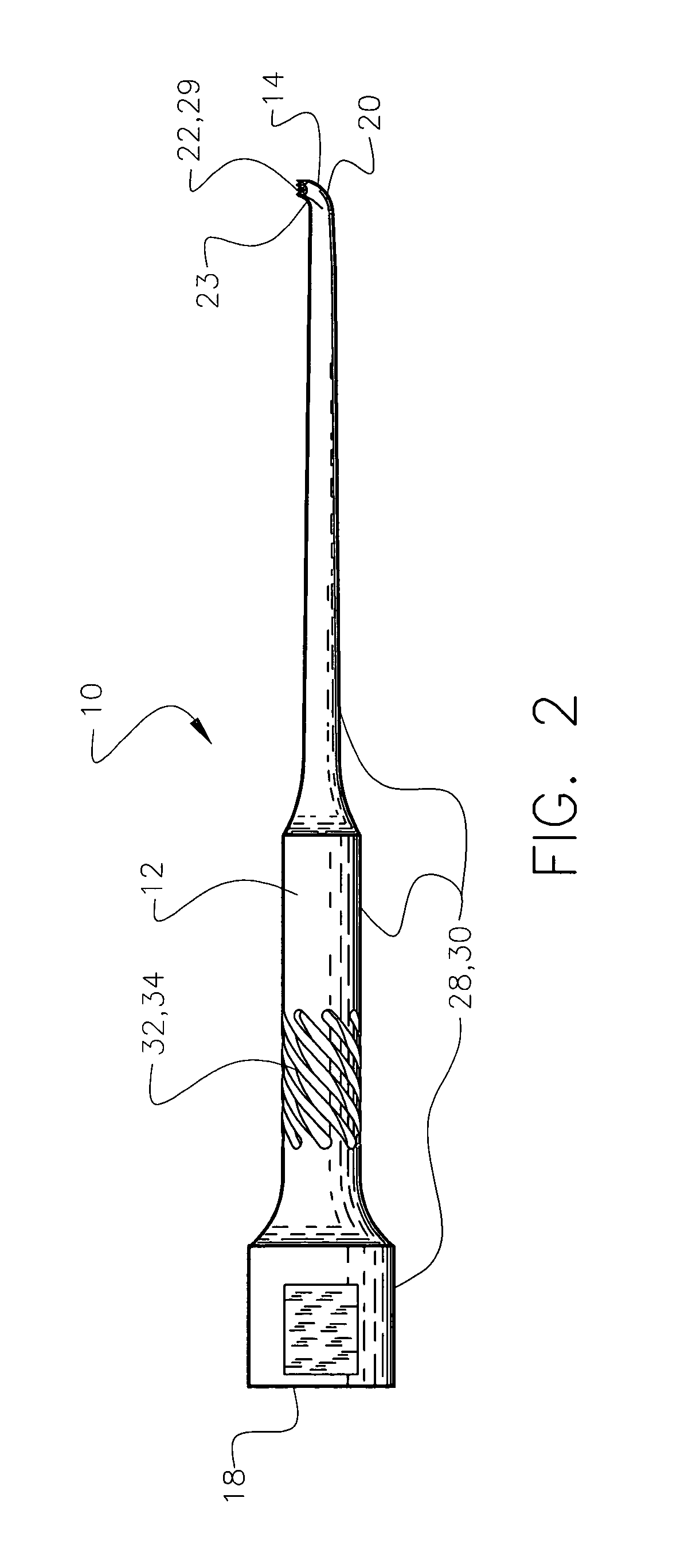Torsional dissection tip
a torsional and tip technology, applied in the field of torsional dissection tips, can solve problems such as excessive heat generation, and achieve the effects of efficient bone removal, reduced heat generation, and increased bone removal
- Summary
- Abstract
- Description
- Claims
- Application Information
AI Technical Summary
Benefits of technology
Problems solved by technology
Method used
Image
Examples
Embodiment Construction
[0027] Referring now to the drawings, there is shown in FIGS. 1-8 a preferred embodiment of a torsional dissection tip 10 having a longitudinal-torsional resonator 12 (L-T resonator) having a cutting surface tip 14 comprising a plurality of teeth 29 arranged with a pitch, i.e. distance between successive teeth 29 in a plane of motion, substantially equal to the torsional displacement of said tip 10. Said L-T resonator 12 has a first or proximal end 18 having a preferably female threaded portion 19 which connects with an ultrasonic generator or electro-mechanical transducer and a second or distal end 20 having said cutting surface plane 22. A central axis 24 of said L-T resonator 12 is centrally located and extends from said first end 18 to said second end 20. In a preferred embodiment, a tubular irrigation path 26 extends from said threaded portion 19 through said second end 20. Also in a preferred form, from said first end 18 to said second end 20 said L-T resonator 12 tapers 28 in...
PUM
 Login to View More
Login to View More Abstract
Description
Claims
Application Information
 Login to View More
Login to View More - R&D
- Intellectual Property
- Life Sciences
- Materials
- Tech Scout
- Unparalleled Data Quality
- Higher Quality Content
- 60% Fewer Hallucinations
Browse by: Latest US Patents, China's latest patents, Technical Efficacy Thesaurus, Application Domain, Technology Topic, Popular Technical Reports.
© 2025 PatSnap. All rights reserved.Legal|Privacy policy|Modern Slavery Act Transparency Statement|Sitemap|About US| Contact US: help@patsnap.com



